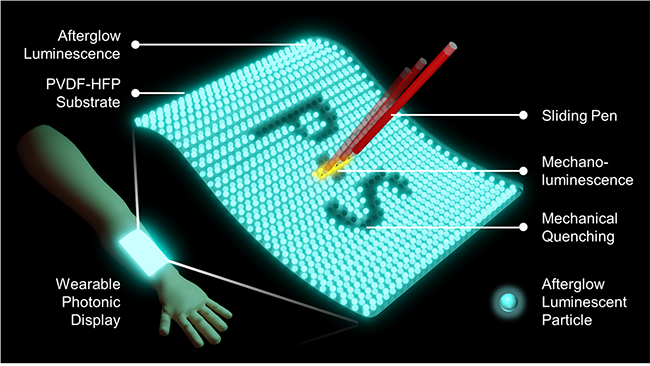The optical characteristics of afterglow luminescent particles (ALPs) in mechanical quenching (MQ) and mechanoluminescence (ML) have garnered significant interest for a variety of technological uses.
 A schematic representation of an optical system using mechanoluminescence and mechanical quenching in afterglow luminescent particles. Image Credit: Pohang University of Science and Technology
A schematic representation of an optical system using mechanoluminescence and mechanical quenching in afterglow luminescent particles. Image Credit: Pohang University of Science and Technology
Pohang University of Science and Technology (POSTECH) researchers have made headlines recently for creating an optical display technology that uses ALPs to write and erase messages underwater.
The team from the Department of Materials Science and Engineering at the POSTECH, led by Professor Sei Kwang Hahn and Ph.D. candidate Seong-Jong Kim, discovered a unique optical phenomenon in ALPs. They then successfully developed a device to use this phenomenon, and the results of the study were just released in the international journal Advanced Functional Materials.
ALPs can absorb energy and release it gradually. When exposed to physical pressure from the outside, they can exhibit mechanoluminescence. When they undergo mechanical quenching, the light they emit disappears. Although this technology has been actively researched for optical displays, the exact mechanism has not been fully understood.
In this study, the group investigated the effects of recharging and trapped electrons on quenching and mechanoluminescence. They were able to identify the underlying mechanisms for both phenomena. Building on this knowledge, they combined ALPs with a very thin polymeric material (PVDF-HFP) that could realize both phenomena simultaneously. This combination led to the development of a skin-attachable optical display patch.
With just a little finger pressure, the display patch could write information. The patch resets to a blank state when exposed to UV radiation, much like when you use an eraser to remove text from a sketchbook. Furthermore, the touchscreen display demonstrates moisture resistance and continues to function even after being submerged in water for extended periods.
It could serve as a communication tool in situations with limited communication options such as underwater environments characterized by low light or high humidity. It would be also used for wearable photonic biosensors and phototherapy systems in extreme environments.
Sei Kwang Hahn, Professor and Lead Researcher, Department of Materials Science and Engineering, Pohang University of Science and Technology
The Basic Research Program, the Korea Medical Device Development Fund, the Biomedical Technology Development Program of the National Research Foundation of Korea, and POSCO Holdings provided financial support for the research.
Journal Reference:
Kim, S., et al., (2024) Mechanoluminescence and Mechanical Quenching of Afterglow Luminescent Particles for Wearable Photonic Display. Advanced Functional Materials. doi:10.1002/adfm.202314861